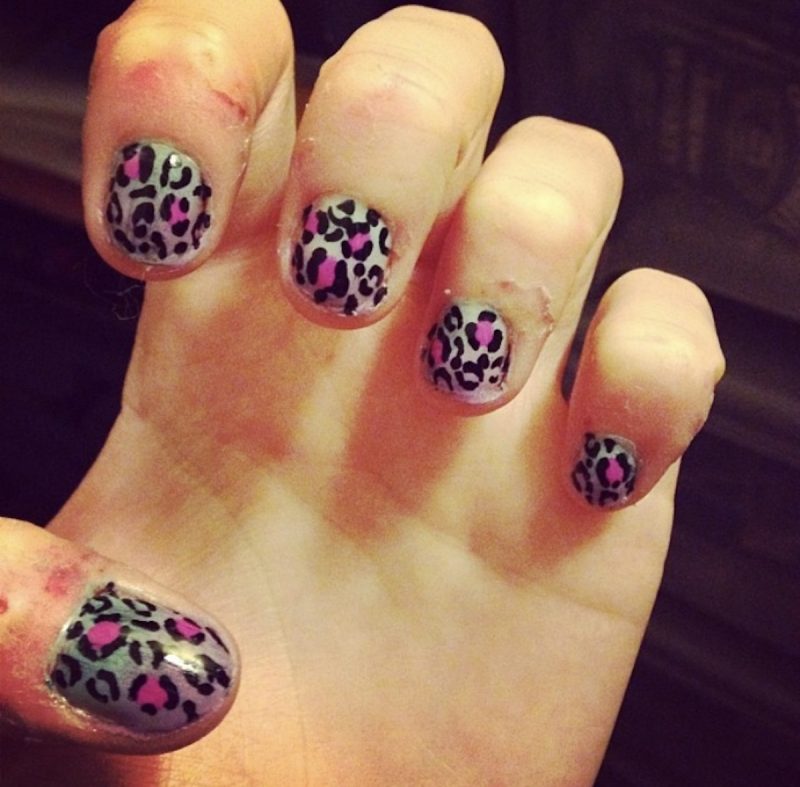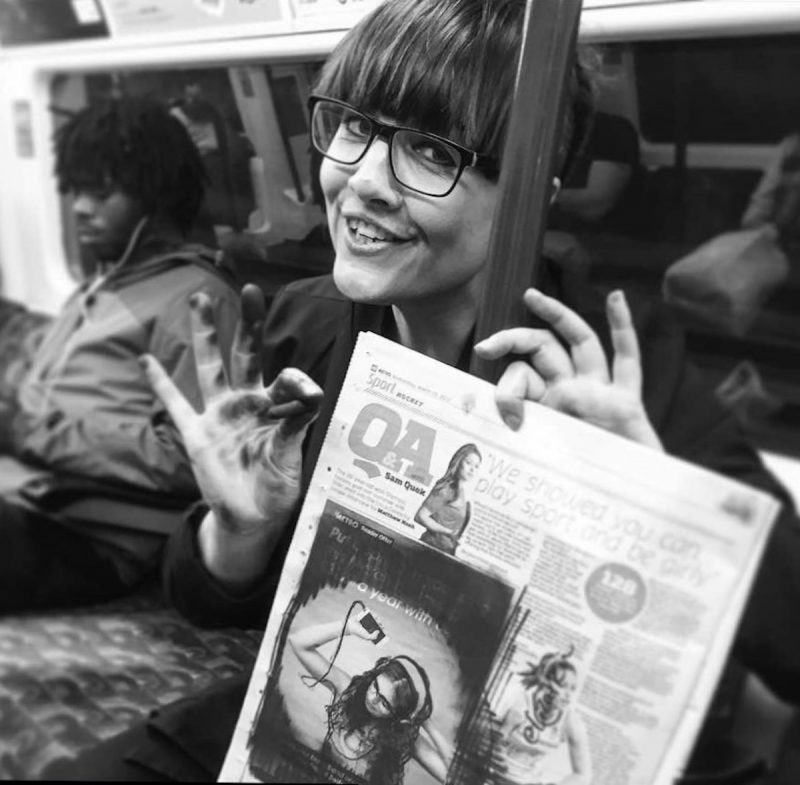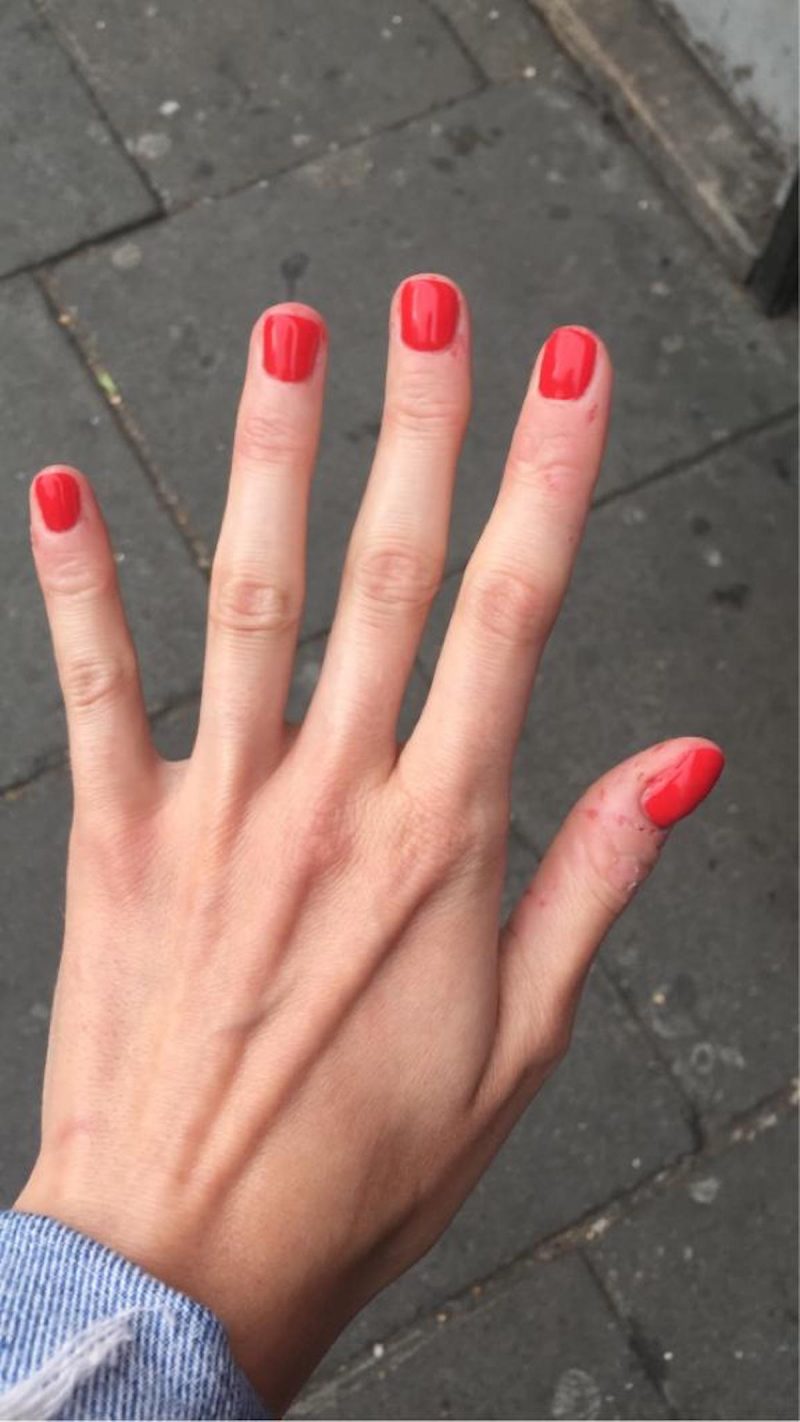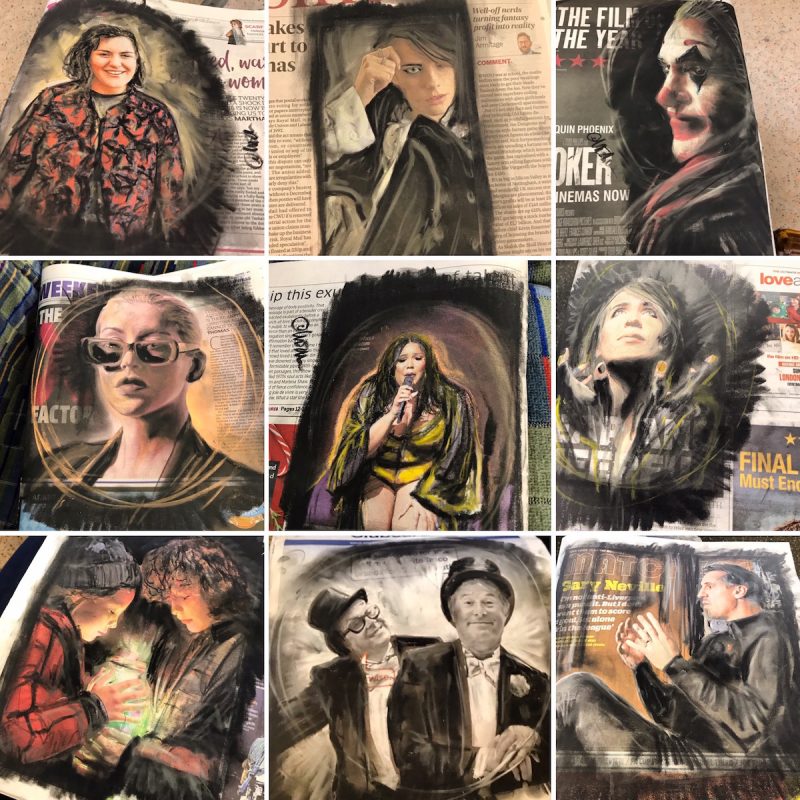- Now 27 years old, I’ve been picking and biting the skin on my fingers for as long as I can remember, leaving them scabbed and painful.
- In my late teens, I realized I was suffering from Excoriation Disorder, a body-focused repetitive disorder.
- It’s an under-recognized but common condition that causes people to bite and pick the skin on their bodies to regulate levels of stimulation in their central nervous systems.
- I managed to finally let my fingers heal by stopping picking one finger at a time, bandaging them to remove temptation.
- I’m hugely proud of myself, but sometimes I look at my hands and think they belong to somebody else.
- Visit Insider’s homepage for more stories.
I started biting my fingers before I could chew. At least, I don’t remember ever looking at my fingers even as a tiny child when the nails weren’t stubs, the skin gnawed.
At times my hands have been scabbed to the second knuckle on each finger. My fingertips have been too swollen and injured to bend, and too painful to pull on clothes or hold a pencil.
I’ve stained clothes, notebooks, and keyboards indelibly with blood smears, disgusted friends, lovers, and strangers with hands that looked like a werewolf had been let loose on them.
For decades, I have picked and bitten at wounds on my fingers that I refused to let heal.
Until now.
For the first time ever, I have smooth fingers. This is how I got there.
In my late teens, I discovered I had Excoriation Disorder

As a child, I was a nailbiter, a cuticle-biter, a biter of pretty much anything I could put in my mouth - pens, headphones, the feet of a limited edition Victoria Beckham Barbie. I began picking my fingers as well as biting them in my early teens.
A cursory Google search in my late teens led me to discover that I had Excoriation Disorder, a body-focused repetitive behavior (BFRB), a category which also includes hair-pulling and nail-biting.
Dr Fred Penzel, Ph.D., a psychologist from Huntingdon, New York, told Insider: "I believe that people carry out BFRBs as a way of regulating levels of stimulation within their central nervous systems.
"The behaviours give them stimulation when they are understimulated (sedentary or bored) and reduce levels of stimulation when they are overstimulated (stressed or happily excited).
"Beyond that, we still don't really understand what is actually happening on the neural level."
Penzel is member of the TLC Foundation for body-focused repetitive behaviours, an organization dedicated to sharing knowledge, treating, and finding a cure for these disorders.
A large patient study is also currently underway in the US to discover what causes these disorders and work out the best way to treat them.
My fingers were constantly, throbbingly painful
 Foto: My fingers were constantly painful, swollen and bleeding.sourceAlice Johnston
Foto: My fingers were constantly painful, swollen and bleeding.sourceAlice Johnston
For me, the urge to pick feels like an impossible-to-ignore sensation, similar to a sneeze. When I peel back a piece of skin, drawing blood, I feel satisfied. I wait maybe three seconds, then start doing it again. All day, every day, often without noticing.
"Long-term effects of Excoriation Disorder could include scarring and deformation of the fingertips," Dr Penzel said. "Damaging infections can also result.
"Psychologically, when damage is serious, it can cause stigmatization and social embarrassment, not to mention pain."
For years, this was just how my fingers were - constantly, throbbingly painful. Squeezing a lemon was torture. I couldn't wear white clothes, because the blood left trails where I brushed my hands over the fabric.
I was never ashamed, but I didn't understand my mind's drive to hurt myself. My partners and family hated it, going so far as to smack my hands away from my mouth when they saw that I'd begun to bite.
But it turns out I'm not alone.
"This disorder could involve as many as 4% of the population, and would therefore be considered common," according to Dr. Penzel.

43-year-old artist Liz Atkin knows the unbearable urge to pick only too well.
"I've been picking at the skin all over my body since I was six," she told Insider. "I didn't know how to stop, I didn't know that anyone else did it, I didn't even know it was a disorder until I was in my thirties.
"Lots of people think it's just a bad habit, but it's so much more than that. It's caused me decades of guilt and pain but during the act itself I feel peaceful. It's not painful - it only hurts when I stop. Then I feel guilty, which makes me pick more."
Both awareness and guilt enabled me to stop
It was the awareness and subsequent guilt from picking and biting which enabled me to stop. I was in therapy, which allowed me to sit more comfortably within myself and take stock of my life, and I found that my picking was becoming less involuntary.
It started bothering me that I was uncontrollably inflicting such horrible wounds on myself. As a first step towards stopping, I forbade myself from injuring my third fingers, my least damaged. The rest were still fair game.
Amazingly, they healed completely within a couple of days. Emboldened, and thrilled by how perfect two of my fingers now looked, I set my middle and then my little fingers as out of bounds also.

This gradual approach combined with ongoing therapy for non-finger-related matters worked. It was like I was reprogramming my brain to not touch that part of my hands any more.
I had previously been too grossed out by my fingers to get manicures, but I found getting gels meant I didn't want to ruin the untouched look of my nails, and I directed any picking urges to my thumbs and index fingers.
Plasters were an incredibly useful tool, too, as I began taping up my index fingers so I couldn't see or access them. This allowed them to heal, and I found it much easier to not touch them if there was no rough skin to pick at. Soon, only my thumbs remained.
Atkin also found relief in redirecting her urges.
"As soon as I pick up a piece of charcoal to draw, the urge to injure myself dissipates," she said. "I find the movement pattern of drawing on paper similar to how I scan my fingers over my skin to find something to pick."
Finding that she often picked while travelling, Atkin began drawing while commuting.
"I've given away more than 18,000 drawings that I've created on trains to stop myself from anxiously picking my skin," she said. "I shift the urge to harm myself into making something nice to give someone else."

This often leads to conversations about mental health with her fellow commuters, some of whom contact Atkin afterwards to tell her they struggle with the same condition.
"I've given a keynote speech at the global conference on BFRBs the TLC Foundation hosts, and put on creative workshops for young people to give them a healthy outlet. If I'd had information or even a name for the behaviour I couldn't stop 20 years ago it would have been life changing, so if I reach just one person with my work, it's worth it."
I can see a future where my fingers are unblemished
Faced with losing something that had comforted and calmed me for years, I struggled. Before, I'd been able to redirect any nervous picking energy towards my thumbs, but now I was trying to stop completely.
My thumbs are vastly better than they were a year ago, but they still have some small scars, especially when I'm tired or stressed.
I had a glorious two months this summer of entirely healed hands, and I can see a future for myself where my fingers are unblemished.
I'm hugely proud of myself - but sometimes I look at my hands and believe they belong to somebody else.
Read more:
Biting your nails or picking your skin can be indicative of a serious problem - here's why
